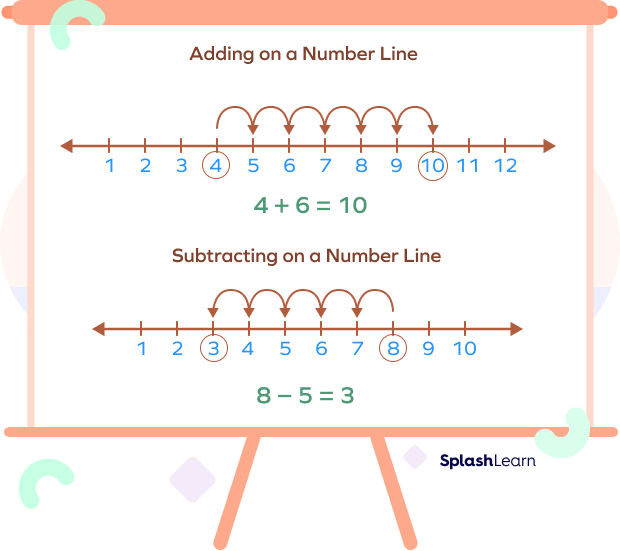Vacation with My Nani Maa – Complete Guide For Class 3 Math Chapter 4
Welcome to iPrep, your Learning Super App. Our learning resources for the chapter “Vacation with My Nani Maa” in Mathematics for Class 3rd are designed to ensure that you grasp this concept with clarity and perfection. Whether you’re studying for an upcoming exam or strengthening your concepts, our engaging animated videos, practice questions, and notes offer the best of integrated learning with interesting explanations and examples.
This chapter revolves around the heartwarming story of Nani Maa (grandmother) and her two grandchildren, Anya and Rohan, who go on vacation together. During their vacation, Nani Maa teaches the children simple math concepts like addition and subtraction in fun, everyday situations. Through this engaging story, students will learn how to add and subtract numbers using basic methods, a number line, a number grid, and bundles, making the learning process interactive and relatable.
Story: A Vacation With My Nani Maa
Anya is excited to stay at Nani Maa’s house for their holiday with Rohan. They have exciting new things to learn from Nani Maa every day, and every day is an experience. Eager to learn, the kids and their grandma gather on the porch one bright afternoon.
Nani Maa offers a smile and suggests that we start a game. I’m going to teach you how to add and subtract, which is important!
Simple Addition and Subtraction
Mangoes are taken out of a basket by Nani Maa. “Anya, take a look at these mangos. How many mangoes do you currently have if I give you two more after you already have three?”
Anya uses her fingers to count. “2 plus 3 equals 5! I’ve got five mangos.
Nani Maa exclaims, “Very good!” What would happen if I took away one of your mangos? What number do you still have?
After giving it some thought, Anya states, “If I take away 1 from 5, I have 4 mangoes left.”

“You’re correct! We refer to this as subtraction. You subtract the amount you take away from your total when you do so.”
Then Nani Maa looks across at Rohan. Assume you have seven marbles. How many will you have if I give you three more?”

In his mind, Rohan quickly adds up the numbers: “7 plus 3 is 10.” Ten marbles will be mine!”
With a nod, Nani Maa says, “Now picture losing four of those marbles. How many people remain?”
“10 minus 4 equals 6 marbles!” With confidence, Rohan responds.
Nani Maa describes addition as adding something together, and subtraction as taking something away or eliminating a portion of the whole, using these straightforward examples.
Addition and Subtraction on the Number Line
Following the mango and marble game, Nani Maa paints a long line on the ground with a piece of chalk. She says, “This is known as a number line.” “It’s another fun way to do addition and subtraction.”

Along the line, she draws numerals that range from 0 to 10. “Anya, let’s assume you start at number 2. You advance three steps when you add three. “Where are you going to land?”
Anya moves forward in line with the numbers. “1… 2… 3 steps forward from 2 lands me on 5!”
That’s right! Let’s attempt subtraction now. Begin at 8 and subtract 3.”
This time, Anya takes a step back, saying, “1… 2… 3 steps backward from 8, and I land on 5!”
Rohan keeps a careful eye on things. “Give it a go! I take four steps ahead to arrive at eight if I start at four and add four.”
Nani Maa smiled. “Excellent, Rohan! Try subtracting two from nine now.
Rohan steps back gently. “If I step back 2 from 9, I land on 7.”
The kids rapidly pick up on how simple it is to use a number line for addition and subtraction. Every forward jump corresponds to addition and every backward jump to subtraction. They can more easily and practically see addition and subtraction with the use of the number line
Addition and Subtraction Using a Number Grid

Later on in the evening, Nani Maa opens her drawer and takes out a number grid. Numbers from 1 to 100 are displayed on the grid in rows and columns. She tells the kids, “This number grid will help us do bigger additions and subtractions.”
She points to the number 23. “Rohan, let’s add 5 to 23 using this grid.”
Rohan examines the grid. “I’ll just count 5 squares forward from 23, right?”
Nani Maa answers, “Exactly!”
Rohan advances on the grid. “24… 25… 26… 27… 28! 23 plus 5 equals 28.”
“Well done!” exclaims Nani Maa. Let’s try subtraction now, Anya. Subtract 7 from 50 to start.”
With great care, Anya reverse-counts: “49… 48… 47… 46… 45… 44… 43! Thus, 50 minus 7 is 43.
“Very well done! The number grid makes it easy to see the steps when adding or subtracting. It helps you keep track of larger numbers too.”
As they practice with the number grid, both children grow more confident in their ability to handle bigger sums and subtractions.
Addition and Subtraction Using Bundles
The next day, Nani Maa gathers some sticks and string. She forms bundles by tying groups of ten sticks together. “Now, we are going to learn a new way to do addition and subtraction, using bundles,” she continues.

She presents Anya with three parcels. “If each bundle has 10 sticks, how many sticks are there in 3 bundles?”
After considering, Anya exclaims, “3 bundles of 10 sticks are 30 sticks!”
“That’s right! How many sticks will we have overall if I add two more bundles?”
Bundles are counted by Anya. “3 bundles plus 2 bundles equals 5 bundles, and 5 bundles of 10 sticks means 50 sticks!”
Nani Maa exclaims, “Well done!” “This is how you add using bundles.”
Then she removes two packages. Let’s subtract now. How many bundles remain after subtracting two from five?”
“5 bundles minus 2 bundles equals 3 bundles,” Rohan interrupts. We still have thirty sticks.”
“Exactly! Numbers can be easily grouped using bundles, particularly when working with tens. It simplifies the process of adding and subtracting bigger numbers.”
The kids now know that bundles are useful for grouping numbers, particularly when working with bigger numbers, such as hundreds or tens. In order to make addition and subtraction operations easier, they learn how to divide and organize numbers.
Conclusion
With the help of the fun and practical story “Vacation with My Nani Maa,” kids may learn the basic concepts of addition and subtraction. Simple addition and subtraction, the number line, the number grid, and bundles are all made simple for the grandchildren to understand by Nani Maa using everyday situations. These teaching strategies assist students in developing a solid foundation in fundamental arithmetic while also making math enjoyable. The combination of practical tasks, visual aids, and relatable stories makes the learning experience dynamic and fun. By the time their trip is over, Anya and Rohan have improved their math skills and have been filled with happy memories of their Nani Maa!
n conclusion, CBSE Class 3rd Math, Chapter 4 – Vacation with My Nani Maa offers a delightful blend of storytelling and math practice. Through this chapter, children can learn essential addition and subtraction concepts in an engaging, hands-on manner. Whether it’s through using a number line, a number grid, or bundles, the learning techniques introduced in Vacation with My Nani Maa make math both fun and easy to grasp.
By exploring these everyday math situations with Nani Maa, students can strengthen their foundational math skills. With its interactive and creative approach, Vacation with My Nani Maa ensures that children not only learn but also enjoy the process of doing so. So, keep practicing the concepts from CBSE Class 3rd Math, Chapter 4 – Vacation with My Nani Maa, and you’ll see how exciting math can truly be!
Practice questions on Chapter 4 - Vacation with My Nani Maa
Get your free Chapter 4 - Vacation with My Nani Maa practice quiz of 20+ questions & detailed solutions
Practice Now








